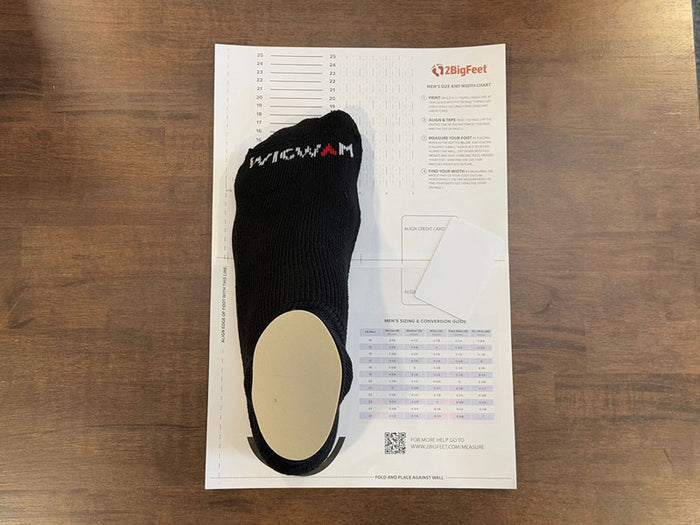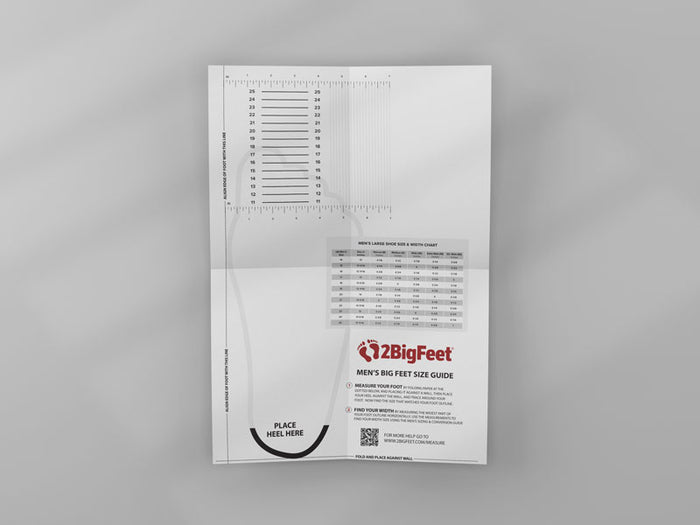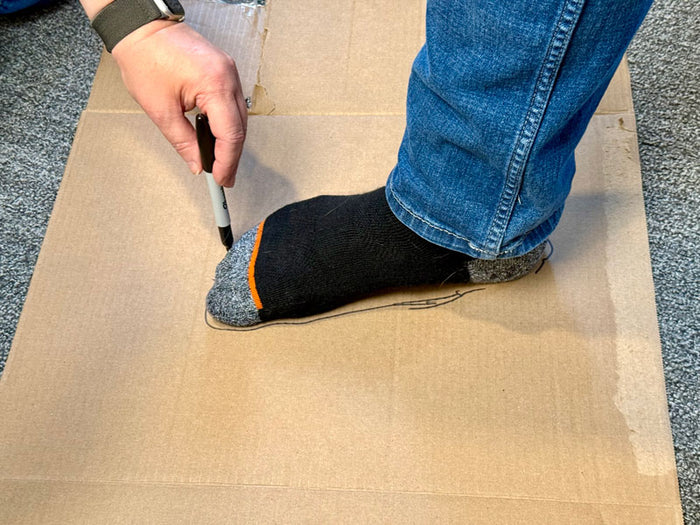3 Ways to Measure Your Feet
Important Details about Measuring Your Feet
Determining your correct shoe size can seem challenging, but we've made it as easy as 1-2-3. The Brannock device is the standard measurement device in traditional shoe stores, and we have a special Brannock device designed to measure up to men's size 25! We've translated those measurements into the chart below. Just follow the instructions to find your size.
Our feet change over time, so it’s important to measure them each time you buy new shoes to ensure the best fit and comfort. To get the most accurate measurement, have someone else help you by marking your feet while you’re standing, wearing socks, and bearing your full weight.
Your Feet are Unique!
Our size chart is a helpful guide, but keep in mind that it’s only two-dimensional, and your feet are three-dimensional. While it can give you a good idea of your shoe size, nothing beats trying on shoes to ensure a perfect fit. We recommend testing your new shoes indoors first to make sure they're just right—returns are easy with prepaid labels available for orders within the contiguous U.S.
Big Feet Size Guide
 Ready to measure your big feet? It’s simple! Just download our printable feet size guide, and follow the easy steps to get an accurate measurement.
Ready to measure your big feet? It’s simple! Just download our printable feet size guide, and follow the easy steps to get an accurate measurement.
Important: Important: Set your printer to "Actual Size" or "100%" and print on standard 8.5” x 11” paper to ensure the measurements are accurate.
Once printed, follow the instructions on the sheets to measure your feet.
No Printer? No Problem!
If you don’t have a printer, simply order your feet measuring guide, and we’ll mail it right to you. Just pay for postage, and you’ll have your template in hand in no time.
Tracing Method

1. Place a piece of blank paper or cardboard on a hard floor. Since your feet may not fit on a standard-sized piece of paper, feel free to use a piece of cardboard or tape two pieces of paper together for more room.
2. Stand on the paper wearing a sock of medium thickness.
3. Holding a pencil vertically, place a mark at the end of your heel.
4. Place another mark at the tip of your longest toe.
5. Mark the sides of your foot at the widest part.
6. Measure your other foot using the same method.
7. To find your size, measure the heel-to-toe mark and use the inch-to-size table. For example, if you are a man and your foot measures 12" long, you will wear a U.S. size 14 shoe.
8. To find your width, measure the marks for the widest part of your foot and use the inch-to-size table. For example, if you are a man with a U.S. size 14 length and your width measures 4-8/16", you will wear a medium width (D) shoe.
9. If your measurements are between two sizes, or you find one foot's measurement larger than the other, always move up to the larger size.
10. If swelling is an issue you may also wish to measure your foot girth. Girth is measured all the away around your foot and can be measured at the instep (instep girth) and/or at the ball of your feet (foot ball girth). You can call us with these measurements and we can help fit you into our therapeutic shoes which are designed to accommodate swelling and edema.
Inch to Size Chart
| Heel to Toe Length (in inches) | Size (USA) | Narrow Width (B or C) | Medium Width (D) | Wide Width (2E) | Extra Wide Width (4E) | Extra Extra Wide Width (6E) |
|---|---|---|---|---|---|---|
| 12 | Size 14 | 4 1/8 | 4 1/2 | 4 7/8 | 5 1/4 | 5 5/8 |
| 12 5/16 | Size 15 | 4 1/4 | 4 5/8 | 5 | 5 3/8 | 5 3/4 |
| 12 11/16 | Size 16 | 4 3/8 | 4 3/4 | 5 1/8 | 5 1/2 | 5 7/8 |
| 13 | Size 17 | 4 1/2 | 4 7/8 | 5 1/4 | 5 5/8 | 6 |
| 13 5/16 | Size 18 | 4 5/8 | 5 | 5 3/8 | 5 3/4 | 6 1/8 |
| 13 11/16 | Size 19 | 4 3/4 | 5 1/8 | 5 1/2 | 5 7/8 | 6 1/4 |
| 14 | Size 20 | 4 7/8 | 5 1/4 | 5 5/8 | 6 | 6 3/8 |
| 14 5/16 | Size 21 | 5 | 5 3/8 | 5 3/4 | 6 1/8 | 6 1/2 |
| 14 11/16 | Size 22 | 5 1/8 | 5 1/2 | 5 7/8 | 6 1/4 | 6 1/2 |
| 15 | Size 23 | 5 1/4 | 5 5/8 | 6 | 6 3/8 | 6 3/4 |
| 15 5/16 | Size 24 | 5 3/8 | 5 3/4 | 6 1/8 | 6 1/2 | 6 7/8 |
| 15 11/16 | Size 25 | 5 1/2 | 5 7/8 | 6 1/4 | 6 5/8 | 7 |




